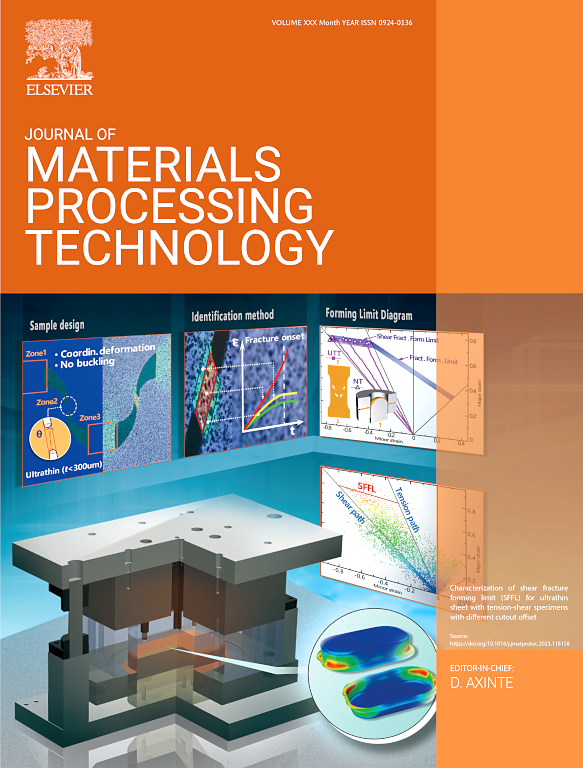Manufacture of ultra-smooth surface with low damage by elastic emission machining
IF 6.7
2区 材料科学
Q1 ENGINEERING, INDUSTRIAL
Journal of Materials Processing Technology
Pub Date : 2025-02-17
DOI:10.1016/j.jmatprotec.2025.118780
引用次数: 0
Abstract
Extreme application scenarios require atomic-level surface smoothness without subsurface damage, particularly for hard and brittle materials prone to cracks and residual stress during mechanical processing. Elastic emission machining (EEM), a non-destructive atomic-level material removal method, has gained significant attention. However, its ultra-smooth surface generation mechanism remains underexplored. This study comprehensively compares the surface morphology, subsurface damage, and material properties before and after EEM polishing from a multi perspective. EEM preferentially removes protruding defects, whereas pit-type subsurface defects with residual compressive stress require a greater material removal depth. Micron scratch experiments reveal the mechanisms of EEM in smoothing and flattening defects, demonstrating its effectiveness in eliminating micron-scale scratches and enabling the conformal polishing of submillimetre microstructure. EEM achieves ultra-smooth surfaces with roughness below 0.1 nm root mean square on fused quartz, monocrystalline silicon, and ULE. The surface and internal lattice integrity of monocrystalline silicon confirm the non-destructive polishing capability of EEM. Power spectral density calculation indicate that EEM can eliminate spatial wavelength errors in the micron to the nanometre scale. This study validates the potential of EEM in high-performance optical component manufacturing and provides valuable references for achieving non-destructive atomic-level processing.
用弹性发射加工制造低损伤超光滑表面
极端的应用场景需要原子级的表面光滑度,而不会造成亚表面损伤,特别是在机械加工过程中容易产生裂纹和残余应力的硬脆材料。弹性发射加工(EEM)作为一种非破坏性的原子级材料去除方法,受到了广泛的关注。然而,其超光滑表面的形成机制仍未得到充分的研究。本研究从多个角度全面比较了EEM抛光前后的表面形貌、亚表面损伤和材料性能。EEM优先去除突出缺陷,而具有残余压应力的凹坑型亚表面缺陷需要更大的材料去除深度。微米划痕实验揭示了EEM平滑和平坦缺陷的机制,证明了其在消除微米尺度划痕和实现亚毫米微观结构的保形抛光方面的有效性。EEM在熔融石英、单晶硅和ULE上实现了粗糙度低于0.1 nm均方根的超光滑表面。单晶硅表面和内部晶格的完整性证实了EEM的无损抛光能力。功率谱密度计算表明,EEM可以消除微米到纳米尺度的空间波长误差。该研究验证了EEM在高性能光学元件制造中的潜力,为实现非破坏性原子级加工提供了有价值的参考。
本文章由计算机程序翻译,如有差异,请以英文原文为准。
求助全文
约1分钟内获得全文
求助全文
来源期刊

Journal of Materials Processing Technology
工程技术-材料科学:综合
CiteScore
12.60
自引率
4.80%
发文量
403
审稿时长
29 days
期刊介绍:
The Journal of Materials Processing Technology covers the processing techniques used in manufacturing components from metals and other materials. The journal aims to publish full research papers of original, significant and rigorous work and so to contribute to increased production efficiency and improved component performance.
Areas of interest to the journal include:
• Casting, forming and machining
• Additive processing and joining technologies
• The evolution of material properties under the specific conditions met in manufacturing processes
• Surface engineering when it relates specifically to a manufacturing process
• Design and behavior of equipment and tools.
 求助内容:
求助内容: 应助结果提醒方式:
应助结果提醒方式:


